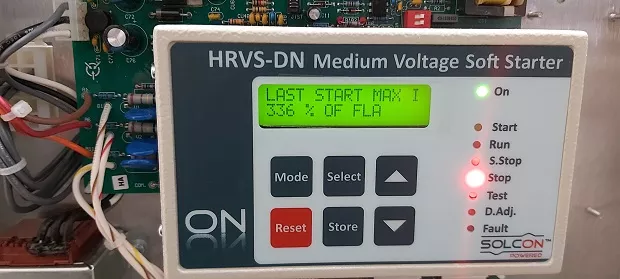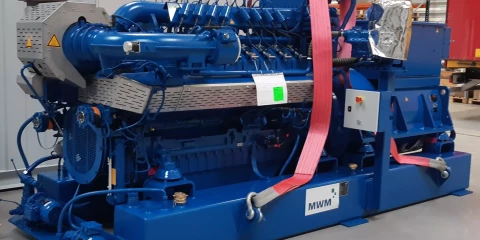Application of Soft-start to start asynchronous motors - implementation at the client's
Soft starters - devices based on thyristor technology that eliminate the mains surge caused by the magnetisation of the motor being switched on and reduce the start-up current to acceptable levels of the order of three times the rated motor current - have been an effective and popular solution for our customers for many years. Thanks to their clever design and reliability, they have proven themselves in most typical applications for starting even the largest medium-voltage asynchronous motors.
If you have several medium-voltage motors and need to limit the starting currents of each motor, the ideal solution would be to use one soft starter for each motor individually. Unfortunately, in many cases this solution may not be feasible, e.g. due to the lack of space required to house several soft-starts, and also the higher costs of such an investment.
Multistart system based on HRVS-DN soft-start as a way of solving asynchronous motor starting problems
An effective solution to the problem described above, reducing both investment costs and the amount of space required, is to use a so-called MULTISTART system. We will present the idea of such a system on the example of a system supplied by CES to one of its customers.
The system has a modular structure, and its main component is the HRVS-DN soft-starter from SOLCON - the world leader in systems for soft start-up of asynchronous motors. The soft-start has been connected by rail bridges to the power field and two motor fields. Each motor field was equipped with two vacuum contactors (starting and bypass).
The first of these connects the output of the soft-start to the motor that is currently being started, once the start is complete the second contactor is switched on, connecting the motor directly to the mains, and the soft-start is disconnected and ready to start the next motor. Once start-up is complete, each motor bay is independent, with separate protection for the motor, a safety circuit to shut down and lock out the selected motor in an emergency, and an independent earthing device to allow work to be carried out safely on the selected motor while the rest of the system can operate normally.

Multistart monitoring and management system
The entire system is managed by a PLC equipped with an operator panel allowing the selection of starting parameters for individual motors and monitoring of all system functions. The CUMULUS system's remote communication module allows both the service technician and the user to access system diagnostic data and monitor system operation. The protections and network analysers with which the motor bays are equipped are connected via a serial bus, allowing easy integration of the system into the plant's master system and data recording in the MES or SCADA system.

The entire system has a modular design, allowing the system to be expanded with additional motors and scaled at will. The only limitation is the total power, which cannot exceed the capacity of the system's power field. Both the power field and the main bus bridge are made as modular components that can be replaced with larger ones if necessary. The MULTISTART system controller software in its current version allows a maximum of nine motors to be served.

